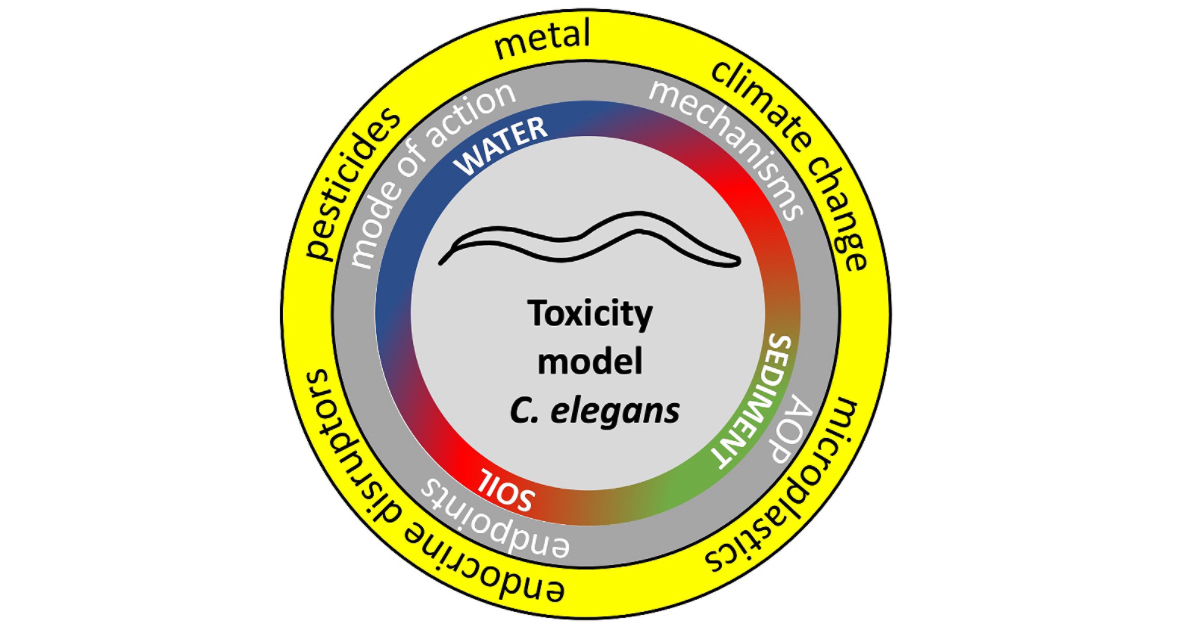Caenorhabditis elegans as a Test Model in Environmental Toxicology
A special issue of Toxics (ISSN 2305-6304). This special issue belongs to the section "Novel Methods in Toxicology Research".
Deadline for manuscript submissions: 10 February 2026 | Viewed by 158

Special Issue Editors
Interests: C. elegans; alternative animal testing; neurotoxicity; environmental toxicity test methods
Special Issues, Collections and Topics in MDPI journals
Special Issue Information
Dear Colleagues,
Beginning in the 1970s, the nematode Caenorhabditis elegans emerged as an important animal model for a variety of biological fields including neurobiology, developmental biology, and genetics. Much of the early work with C. elegans focused on its genetic manipulability and describing its developmental cycle and nervous system. C. elegans’ use in these areas was supported by its ease of culturing, small body size, and short life cycle. These characteristics led to an expansive basic knowledge of its biology including the mapping of its nervous system and characterization of its genome. It also served as the model organism for mapping the human genome. In the 1980s, these same features led researchers to begin to use it as a test organism in environmental toxicology. Initially, studies were performed on agar, but later methods were developed for water, sediment and soil exposure. The development of these methods allowed C. elegans to be used to both assess the toxicity of chemicals under a realistic environmental exposure in the laboratory.
This Special Issue aims to assemble pioneering research exploring the range of uses of C. elegans within the broad field of environmental toxicology including its use for the rapid screening of the toxicity of chemicals found within the environment. The collection of papers in this issue covers a wide range of toxicants—including heavy metals, pesticides, industrial chemicals, and emerging concern substances, such as nano- and microplastics. The genetic tools available C. elegans (i.e., the use of mutant strains; omics) allow for the organism to expand the findings beyond just phenotypic toxicity but to include the identification of specific mechanisms of action at the sub-organismic level.
Topics of interest include, but are not limited to, the following:
- Studies using elegans to assess the environmental impact of chemical exposures in a field setting using standardized protocols;
- Linking laboratory toxicity studies with higher tier studies (e.g., microcosms) or field studies;
- Mechanistic studies using elegans to assess environmental toxicant-induced disruptions;
- Studies exploring new exposure methods for using elegans in environmental toxicology, including high-throughput screening, automated phenotyping, and CRISPR-Cas9 gene editing;
- Comparative toxicology and the cross-species relevance of findings with elegans;
- Toxicity studies for new, emerging substances (e.g., microplastics, PFAS, nano-pesticides), exploring various toxicity mechanisms;
- Exploring the influence of confounding environmental factors (e.g., climate change) on the outcome of toxicity studies with C. elegans.
Prof. Dr. Phillip L. Williams
Dr. Sebastian Höss
Guest Editors
Manuscript Submission Information
Manuscripts should be submitted online at www.mdpi.com by registering and logging in to this website. Once you are registered, click here to go to the submission form. Manuscripts can be submitted until the deadline. All submissions that pass pre-check are peer-reviewed. Accepted papers will be published continuously in the journal (as soon as accepted) and will be listed together on the special issue website. Research articles, review articles as well as short communications are invited. For planned papers, a title and short abstract (about 250 words) can be sent to the Editorial Office for assessment.
Submitted manuscripts should not have been published previously, nor be under consideration for publication elsewhere (except conference proceedings papers). All manuscripts are thoroughly refereed through a single-blind peer-review process. A guide for authors and other relevant information for submission of manuscripts is available on the Instructions for Authors page. Toxics is an international peer-reviewed open access monthly journal published by MDPI.
Please visit the Instructions for Authors page before submitting a manuscript. The Article Processing Charge (APC) for publication in this open access journal is 2600 CHF (Swiss Francs). Submitted papers should be well formatted and use good English. Authors may use MDPI's English editing service prior to publication or during author revisions.
Keywords
- Caenorhabditis elegans
- environmental toxicology
- exposure methods
- emerging environmental exposures
- sediment toxicity
- soil toxicity
- toxicity mechanism
- high throughput testing
- omics
- emerging anthropogenic substances
Benefits of Publishing in a Special Issue
- Ease of navigation: Grouping papers by topic helps scholars navigate broad scope journals more efficiently.
- Greater discoverability: Special Issues support the reach and impact of scientific research. Articles in Special Issues are more discoverable and cited more frequently.
- Expansion of research network: Special Issues facilitate connections among authors, fostering scientific collaborations.
- External promotion: Articles in Special Issues are often promoted through the journal's social media, increasing their visibility.
- Reprint: MDPI Books provides the opportunity to republish successful Special Issues in book format, both online and in print.
Further information on MDPI's Special Issue policies can be found here.







